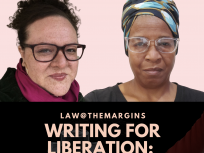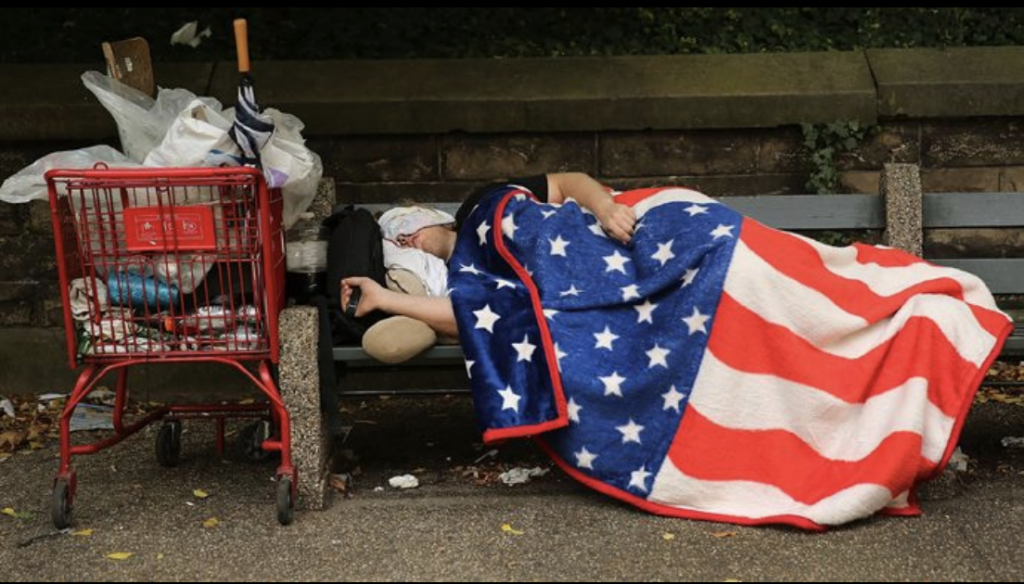
Policy makers need to do more than just listen to the homeless community. They need to turn their ideas into action.
By Reginald Black
Editor’s note: This story was produced in partnership with Street Sense Media, a street media paper in Washington, D.C., and is part of “The Right to a Home,” a Community Based News Room (CBNR) series that examines homelessness issues across the United States. CBNR is a project of Law@the Margins, and the series is supported by a Solutions Journalism Network grant.
WASHINGTON, D.C. — The word vulnerability gets thrown around a lot in the homeless community. Nonprofits, advocates and politicians in the District of Columbia use it to make the case that they are helping those who are the most in need. And based on the way people experiencing homelessness are connected to housing in the District, it has become what is said to get someone into housing quicker.
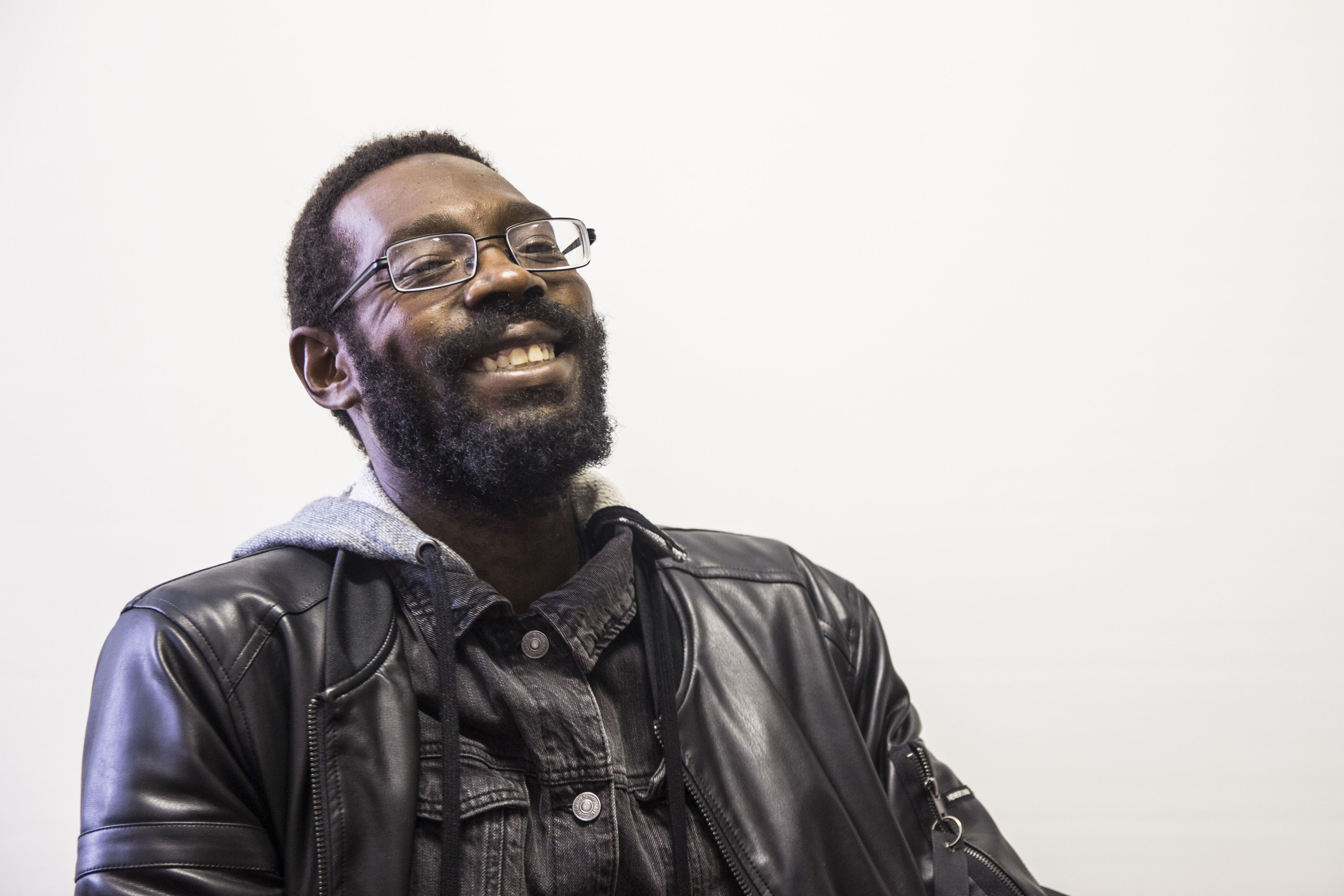
In 2008, the District of Columbia began to institute vulnerability surveys in order to enact “housing first,” the policy of providing a housing subsidy without first requiring sobriety, mental health treatment or other similar stipulations. Then those services would be provided.
This system assumed that those living outside were more vulnerable. At least that’s who appeared to be receiving more vouchers, to the point that some people would move out of shelters to try and achieve housing quicker.
The survey collected demographic information and details such as where a person was staying, and how long they were homeless. It did not ask them to identify what challenges they were facing or how to overcome them. Nor did it speak to the vulnerability of shelter residents, or recommend changes to make shelter a viable option to those experiencing homelessness.
More than a decade later, the more complex survey tool used today still does not solicit client recommendations to improve the system.

The first step to get in line for various housing programs is to complete an assessment that provides a score on the “vulnerability index.” The higher the number, the more vulnerable you are assumed to be.
It’s a triage system. Like an emergency room, the people presumed to have the greatest need come first. It takes into account a person’s history of homelesness, physical and mental health, daily living, and/or substance use.
When a resource becomes available, the people with the highest vulnerability are considered for it. To make the final selection, other factors are considered on a case-by-case basis, such as records of past usage of shelters or other services. This system pits people in need against each other, arguing over who is more vulnerable.
“People are vulnerable in different ways. You really can’t measure vulnerability,” said Kristy Greenwalt, the director of the District of Columbia Interagency Council on Homelessness (ICH). “The singles population is an older cohort of people with a lot of medical and complex health needs, but then children are vulnerable in a different way.”
Greenwalt has a broad view of the vulnerability of those who are experiencing homelessness in D.C. Her role is to serve as an adviser to the mayor and the D.C. Council, as well as to coordinate the efforts of the many agencies that are working on housing stability for residents. “We need all the partners around the table,” Greenwalt said. “While the agencies are focused on managing their agency, I’m looking broadly across the system.”

Although the vulnerability index assessment has led to many vulnerable people receiving housing, many others are screened out for not being vulnerable enough.
Greenwalt may not see a better alternative to the Vulnerability Index-Service Prioritization Decision Assistance Tool (VI-SPDAT), but her system-wide view has called for a fundamental redesign of city-run shelters. The redesign is unique, and promising, because members of the homeless community articulated the needs.
As part of this effort, appointed “consumer representatives” — members of the homeless community — were tasked with conducting listening sessions with shelter residents and those who also are living outside to gain a better foothold on how the city can improve its emergency system.
As a result, the first shelter to be redesigned by the District of Columbia, the 801 East Men’s Shelter, which sleeps 317 men in six rooms, will be getting rid of bunk beds and reducing the number of beds per room to increase privacy, reduce the sense of being crowded into a place, and reduce the likelihood of theft and fights. It will be divided up into three wings, one for “low-barrier” emergency shelter, one for “work beds” for people who are employed and can’t abide normal shelter hours due to their jobs, and one for seniors and medical-respite beds.
As a new building, it will, of course, be cleaner. But the materials and design have been chosen to make it easier to be kept clean, especially when it comes to bed bugs.
Community Activism Creates Effective Housing Solutions
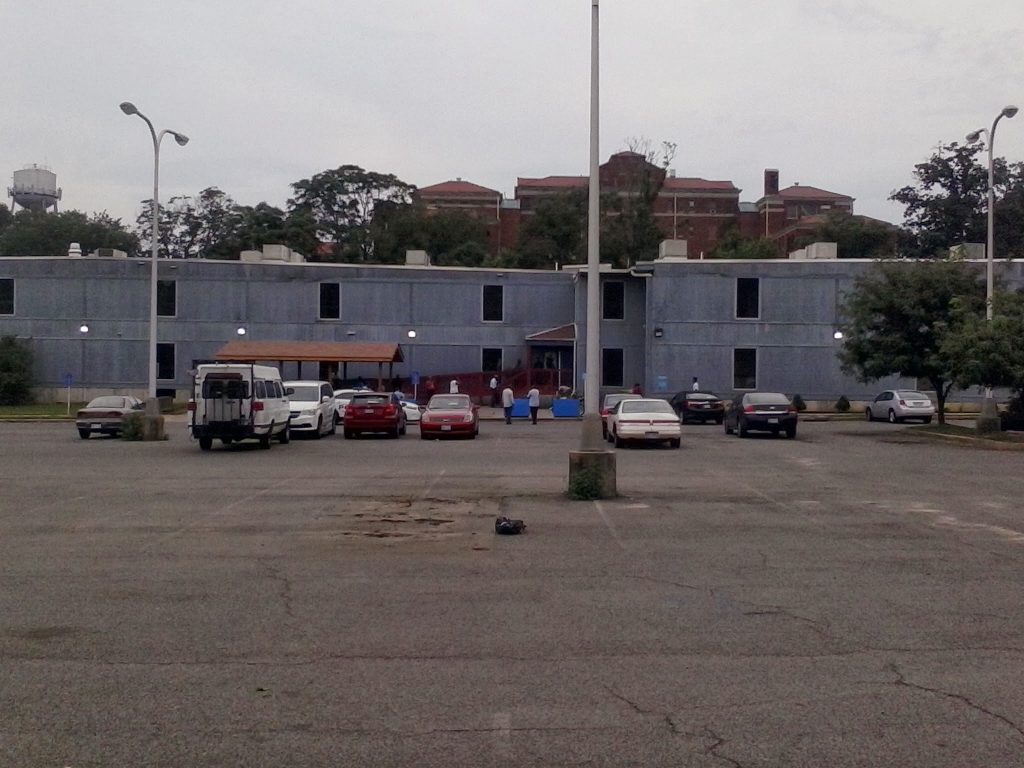
“Nobody feels safe out here,” said Christopher Hines, a 39-year-old D.C. native. “You cannot feel safe sleeping unprotected under a bridge at night — nobody, I don’t care what kind of person you are.”
Hines doesn’t feel safe outside or in shelters. He has been on various waitlists for housing since 2011. D.C. started piloting its vulnerability assessment tool for single adults in 2014. The company that designed the tool, Orgcode, did not conduct any homeless testing. It only used the U.S. Department of Housing and Urban Development (HUD) to identify information gaps the agency wanted to fill. The system didn’t account for stories like Hines’s.
“My parents died when I was 21. I went to the streets, drugs, crime, been out here ever since,” Hines said. “I stay on K Street by the old Domino’s give or take about 32 months.”
Hines is one of at least 607 unsheltered adults in the District, according to an annual count conducted in January 2019. He has chosen to take his chances sleeping outside after what he experienced in city shelters.
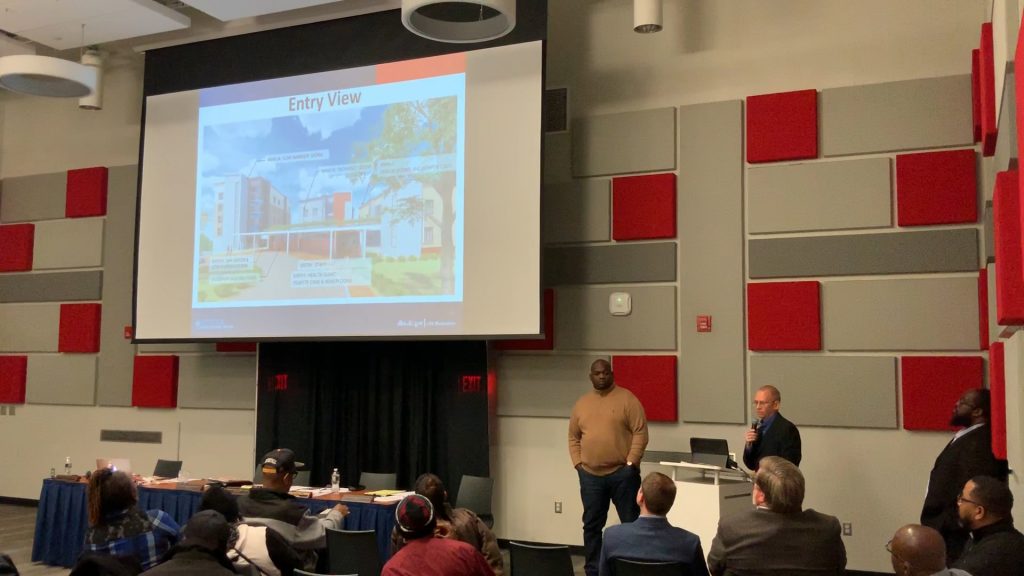
“The shelters are not safe due to budget restrictions as far as the security,” Hines said. “The administrators, the level of professional education from the staff, the level of professional [education] from the security guards there is very low. People come in there with drugs, people come in there with all types of illicit stuff. Those environments wasn’t safe for me.”
Michael Harris, 59, also has been living around Union Station and K Street for the past six months. A lifelong resident of the District, he has been homeless for 15 years and last stayed in the New York Avenue Men’s Emergency Shelter. He also cited violence as a reason not to return to shelters and described a man who was beat up in the 801 East Men’s Shelter and died several days later.
“That lets me know the intensity of the assault,” Harris said. “They didn’t kill him right then and there. He died three days later. There have been shootings, there have been stabbings. I think my chances of survival is better right here.”
According to Greenwalt, the ICH director, every city is unique, and a lot of cities on the West Coast do not have hardly any shelters at all and have tremendous amounts of unsheltered homelessness.
“In D.C., we have a different sort of challenge,” she said. “We have a right to shelter, but we’ve ended up in these large shelters — 300, 800 people. They’re not always very favorable environments for a lot of people. When they say they don’t want to go into shelter because the shelters aren’t clean or they don’t feel safe, those are very valid concerns.”
During the Reagan administration’s overhaul of the mental health system in the 1980s, homelessness increased in the nation’s inner cities. The epidemic caught the attention of advocates like the late, great Mitch Snyder, who conducted a 51-day fast to bring attention to the issue. Synder and his organization, Creative Community for Non-Violence (CCNV), were among the first to get into the shelter business by taking over the unused Federal City College building to provide a safe place for people experiencing homelessness to go.
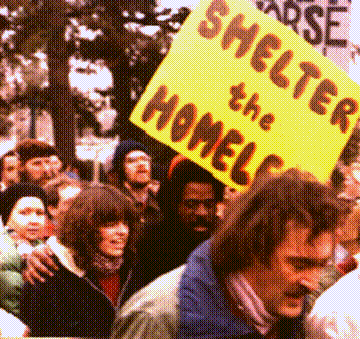
CCNV then pioneered a voter-led ballot initiative to give homeless people a right to shelter in the District of Columbia. D.C. was the first city in the United States to give citizens this right and was the first to repeal it. In 2005, the District of Columbia rewrote the ordinance to give further clarity to what it means to provide emergency housing services. The new law named the Homeless Services Reform Act, which was amended in 2017, mandates the types of programs that are for people experiencing homelessness with its most accessible component being low-barrier shelter.
These programs do not require identification or sobriety requirements to enter. They were intended to stabilize a person experiencing homelessness for 12 hours and no more. The District of Columbia is the only jurisdiction in the region to do so.
Recent data produced by D.C. reports that a significant portion of its homeless population migrate between D.C., Maryland and Virginia when seeking emergency housing services, with a bulk of them only eligible for the low-barrier shelter in the District of Columbia. Yet D.C. still has the highest homeless rate in the region and the country.
Districts with a right to shelter other than Washington, D.C., include New York City, and the state of Massachusetts, which only applies the right to children and families. California also considered a right-to-shelter measure in 2019.
Vulnerability Is a Symptom of Poverty
Harris described half of the places he’s lived while homeless — shelters, residential areas and on the street — as “red-light districts,” which he defined as areas where drugs are being sold or used. He said holdups, assaults and shootings are going to happen in those kinds of areas.
Not all of Harris’s time without stable housing has been spent in shelters or in a tent. He is a carpenter by trade and said he was often allowed to stay in the buildings he was hired to work on. He considered those areas to be safe, but his experience shows otherwise.
Harris said shootings have occurred in the apartments or houses he was staying in, to the point that he was included in a crime scene investigation. “I think about the time my cat and me hid in a bathtub to use that steel tub as a barrier from bullets coming through the window, the wall of apartments and/or the house,” Harris recalled.
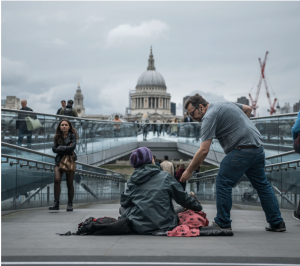
A special report by the U.S. Department of Justice analyzing 2008-2012 data found that people in poor households were twice as likely to be the victims of nonfatal violent crimes than people in high-income households. People in poor households consistently had the highest rates of violent victimization.
“Exposure to violent crime damages the health and development of victims, family members, and entire communities,” according to a 2016 HUD report. “Low-income people and racial and ethnic minorities are disproportionately affected.”
Hines is faced with an issue that most impoverished citizens in the area have to consider, the idea of moving. “I’m at the point where I’m thinking of relocating out of state because I don’t think it’s actually feasible to stay here in the city with so much money, so much power, so much politics, so much freedom, but yet the simplest thing like a place to stay [is unavailable],” he said. “The smallest things are stepped on.”
There are too many hurdles when seeking services, particularly needing to visit various providers just to get the documentation to qualify for the service you need. These long processes result in only helping a few people at a time, which creates a bottleneck where there are more people needing the service.
“What prolongs the crisis itself [is] only a few people can get in at a time,” Hines explained. “I feel as though nobody is getting the services that they need because it’s not sufficient. There are services out here, no doubt. They’re not sufficient.”
The District of Columbia only spends 3 percent of its overall budget on housing, according to the D.C. Fiscal Policy Institute. While there is a lot more room for investment to help people, those living outside and those residing in shelter do differ in their definition of safety.
Bert, a native Washingtonian in his 40s who only gave his first name, said he felt safe in city shelters, though certain things bothered him. “People are always arguing, fighting about something,” he said. “When I got here, my phone got stolen five times. That’s really the only thing I got a problem with.”
Bert said he went to a different shelter first, and liked it better, but had a problem with needing to adhere to an early-afternoon curfew to get a bed.
“I would definitely recommend shelters because I wouldn’t want to see anyone sleeping outside in the cold, or something might happen to them.”
Every community has to remember that people are not only experiencing housing instability. They also face the many problems that are associated with poverty.
Poverty can show up in different ways. For the most part, it impacts transportation to and from places in a region. The lack of resources causes people to take a desperate mindset. These nuances and input are not traditionally asked when producing programs to solve a problem. Usually, think tanks and employees are asked to think of how things can be done better. This leads to gaps in how those who are impacted by the problem are included in solutions.
Homeless-Led Solutions Lead to Better Opportunities
The ICH has proposed a drastic transformation of its shelter system. Its current emergency housing stock is in buildings not meant for the purpose of residences.
For example, DC General Family Shelter was originally a hospital and converted into a shelter after the hospital was closed. According to Greenwalt, at its peak, DC General sheltered about 288 families.
During 2014, then-candidate for mayor Muriel Bowser made a campaign promise to close the decrepit DC General Family Shelter. At the time, she was one of several councilmembers calling for the closure after many complaints from shelter residents. During that same year, an 8-year-old girl was kidnapped from the shelter by a staff member. Public outrage further called for the facility to be closed.
In her first month as mayor, Bowser created a community pledge to end homelessness and expressed interest in overhauling the District’s response to homelessness. Her subsequent strategic plan to end homelessness over five years laid out action steps to redesigning emergency shelter for families and singles. By now, the city has opened five of what it calls “short-term family housing facilities.” With the opening of these new program-oriented family housing sites, the mayor was able to close and begin demolishing DC General.
This is a bold step for the District of Columbia, a place that has laws about sheltering its residents but has never built the facilities to support these programs from the ground up. D.C. has only been able to repurporse buildings not meant for shelter use, including two halfway houses and an office building.
While designing shelters for people that include services such as case management on site is a huge step forward from repurposing old buildings, D.C.’s short-term family facilities still lacked input from homeless families.
That’s changing as the city works through the early stages of redesigning a singles shelter in Southeast. The facility will replace the shelter where Bert now stays and will be enriched to include the services that the current facility lacks.
“We are looking at how we can rebuild our emergency housing stock,” Greenwalt said. “We have some great lessons learned in the family system. We are seeing how the right environment can help stabilize people more quickly.”
When the District was relying on DC General and motels, the average length of stay was over a year. Now families are averaging a shelter stay of 90 days or less, according to Greenwalt.
“Even under the best circumstances, if someone loses their housing and needs to find new housing, we need to make sure there is a safety net in place,” Greenwalt said.
We need a culture shift and a new way of thinking about those who are in need of housing. People who are experiencing homelessness or have experienced it need to be part of policy making.
When Orgcode developed the VI-SPDAT assessment, it was based on missing data gaps that appear in every system. Still today, there is no real way to measure how vulnerable a person really is from that person’s standpoint. In D.C., it took a lot of effort just for the homeless community to be a part of the ICH. Now, there are four homeless representatives.
Their presence has started to change how we are helping people by asking them what they need directly. Listening to the people that are directly impacted by a problem helps inform D.C.’s homeless services every day because the impact of the problem varies from person to person. These conversations are ongoing. In 2019 , the ICH convened an entire monthly workgroup for homeless community engagement.
That group led the process of creating surveys and holding focus groups to bring people experiencing homelessness to the table to inform the 801 East redesign. It also provides an official forum for homeless residents to raise their concerns, which the homeless community representatives can then try to solve.
It’s time to change how we measure all of the things that make a person vulnerable. Fifty-four people were known to have died without a home in the District of Columbia in 2018. Washington, D.C., is leading the way on building client leadership into its homeless services system, but there is still a long way to go. The homeless need more influence on oversight.
Impoverished or underserved communities must be given avenues to lead this paradigm shift. Lives depend on it.
Reginald Black is a native Washingtonian who experienced homelessness on and off from 2008 to mid-2019. He is a reporter and vendor for Street Sense Media and serves as a consumer representative appointed to the D.C. Interagency Council on Homelessness. He’s also involved with several organizations founded by people experiencing homelessness.
Community Based News Room publishes the stories of people impacted by injustice and aspiring for change. Do you have a story to tell? Please contact us at CBNR. To support our Community Based News Room, please donate here.


